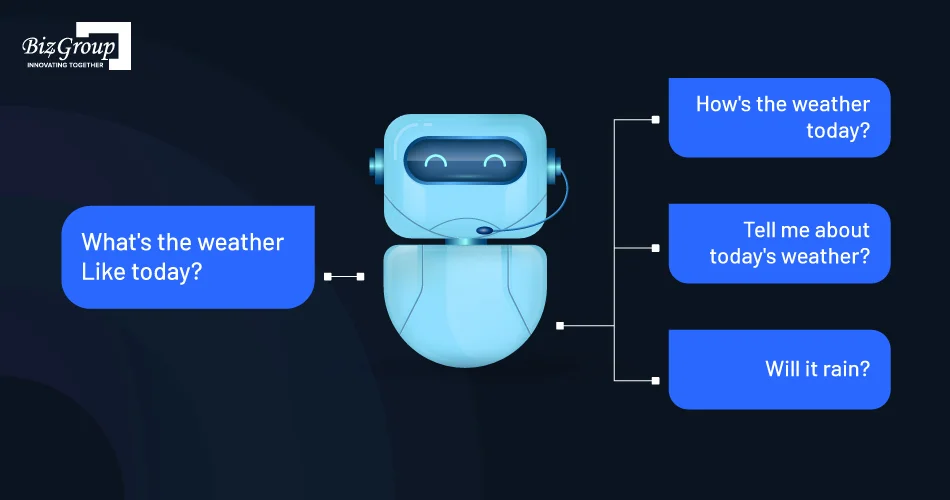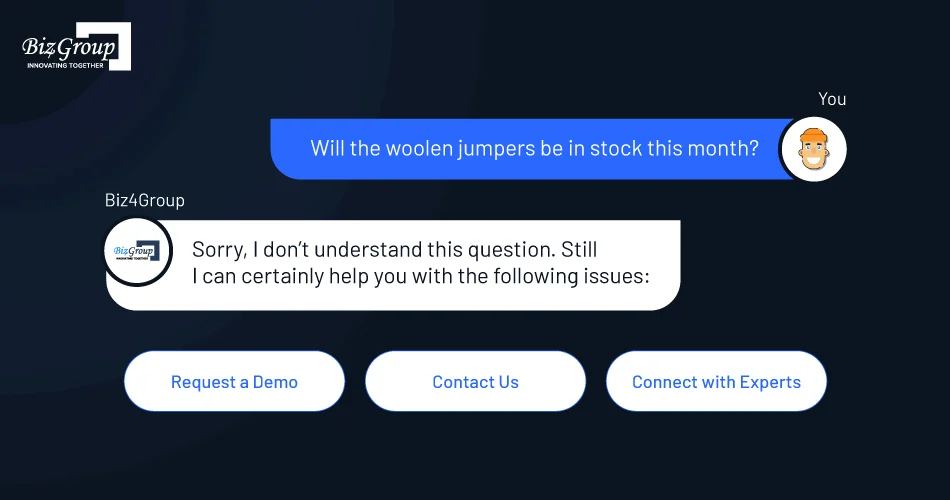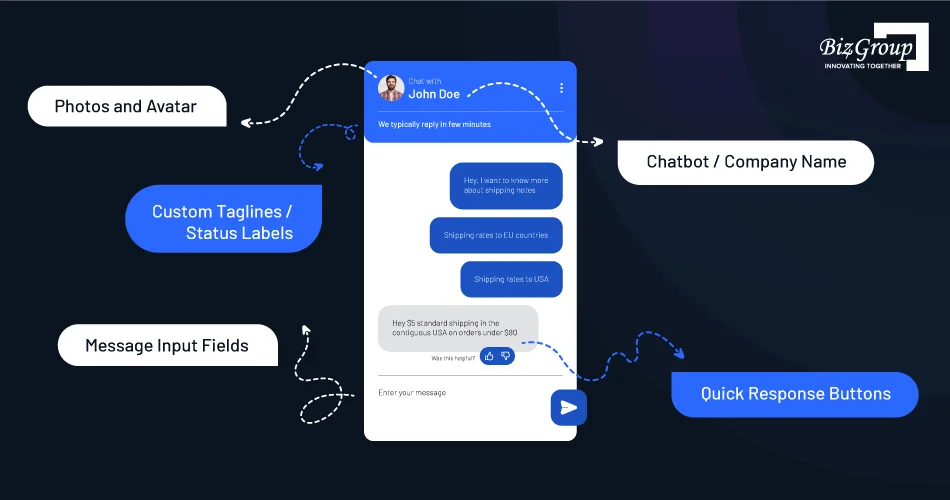Basic AI Chatbot Pricing: A simple chatbot that can answer questions about a product or service might cost around $10,000 to develop.
Read More
Oracle AI Apps help users work more efficiently and effectively through pre-integrated, fully functional AI capabilities that surface outputs directly inside the software that supports their key business functions. Specializing in chatbot development services, we understand that developing conversational AI chatbots is a complex task requiring the collaboration of technical teams for ongoing updates and improvements. These bots are designed to grasp user intent and assist them in finding and accomplishing their goals, ensuring a seamless interaction experience.
Achieving this goal necessitates a combination of human knowledge and artificial intelligence technologies such as NLP, NLU, machine learning, and deep learning.
In the following discussion, we will explore the challenges associated with building and processing chatbots and explore effective strategies to overcome them.
Let’s explore.
The first challenge concerns how conversational AI, such as an AI-driven chatbot, works. This form of AI utilizes NLP (Natural Language Processing) and ML (Machine Learning) technologies to translate human conversations into a language that machines can understand and then formulate a reply.
Here, the primary challenge is accurately understanding user inputs. An AI-driven chatbot excels in interpreting and extracting meaning from diverse user queries, including variations, slang, and ambiguous language, which can often be difficult. This capability makes it a crucial tool in enhancing user interaction and response accuracy.
Here, the challenge is accurately understanding user inputs. Interpreting and extracting the meaning from diverse user queries, including variations, slang, and ambiguous language, can be difficult.
For example, a user query like "What's the weather like today?" can be expressed in various ways, such as "How's the weather today?" or "Tell me about today's weather." The challenge is to accurately interpret these variations and extract the underlying intent.

Training the conversational AI chatbot to understand and handle a wide range of user intents requires substantial data and ongoing refinement.
Here is how you can overcome this challenge:
Chatbots need to maintain context over extended conversations, which is a key functionality provided by advanced chatbot development platforms.
Ensuring that the bot remembers previous interactions, maintains relevant context, and responds appropriately can be challenging.
However, chatbot development platforms are designed to equip chatbots with the ability to effectively manage these aspects, allowing them to deliver a seamless and coherent user experience even in complex dialogues.
Hence, handling interruptions, disambiguating references, and managing conversational flow are crucial aspects of dialog management.
Suppose a user asks, "What is the capital of France?" and follows up with "How far is it from Paris?" The chatbot needs to remember the context that Paris is the capital of France and provide a relevant response.
Here is how you can improve dialog management:

Chatbots often need to connect with various backend systems and databases to retrieve or update information. Integrating multiple APIs, managing authentication, handling data privacy and security, and ensuring seamless interaction with different systems can be complex for some chatbot developers.
For instance, a chatbot in a banking application might need to integrate with a customer database, account management system, and payment gateway to provide services like balance inquiries and fund transfers. Ensuring seamless integration with these systems while handling authentication and data retrieval is a challenge.
To overcome this challenge, developers can:
Dealing with user errors, misunderstandings, and handling edge cases gracefully is crucial for providing a good user experience. Developers crafting custom chatbot solutions need to anticipate and handle situations where the conversational AI chatbot might not understand the user's intent or provide inaccurate responses. These custom chatbot solutions are tailored specifically to manage these complexities, ensuring that the chatbots are well-equipped to improve interaction quality and user satisfaction.
For instance, if a user asks a chatbot about a particular product that the chatbot doesn't recognize or have information about, the chatbot should respond gracefully, acknowledging the limitation and suggesting alternative actions or providing helpful information.

Here is how developers can overcome this challenge:

Chatbots, particularly those integrated with full stack web development, should be sensitive to language nuances, cultural differences, and potential biases. Developers must ensure that the chatbot's responses are appropriate, inclusive, and respectful, considering diverse user backgrounds.
For example, if a chatbot is deployed in different regions, it should avoid making assumptions or using language that may be offensive or inappropriate in a particular culture or language.
The best approach to overcome this challenge is to:
Chatbots should evolve and improve over time. Here, incorporating user feedback, monitoring user interactions, and iteratively refining the chatbot's performance is an ongoing challenge.
For instance, if users frequently correct the chatbot's responses, developers can utilize this feedback to refine the chatbot's understanding and improve future interactions.
Developers need to implement mechanisms for continuous learning, data collection, and model updates to enhance the chatbot's capabilities.
Here is how they can do it:
Read More : Top 5 AI Development Platforms of 2023
Development of an AI-based telecom software solution is a multi-stage process that seeks to develop solutions that run more efficiently, automate processes and deliver a customized experience to customers. In this detailed guide, let's go through the key stages and explain exactly how they combine to create impactful telecom applications.
Designing a chatbot with a user-centric approach is crucial. Developers need to consider the user interface, conversation flow, response times, and overall user experience.
For example, ensuring that the conversational AI chatbot responds promptly to user inputs and provides clear and concise answers contributes to a better user experience.

Hence, striking the right balance between automation and human-like interactions is essential for building an engaging chatbot.
Here are some actionable for this:
Conversational AI, enhanced by AI development services, raises ethical considerations, such as privacy, data security, and transparency. Hence, developers must ensure that the chatbot respects user privacy, secures user data, and operates within legal and ethical boundaries.
To ensure this, developers can:
Undoubtedly, chatbots have demonstrated remarkable effectiveness in engaging and interacting with people and customers. Nevertheless, the challenges discussed above hold immense importance, and successfully addressing them can yield various benefits, including enhanced customer satisfaction and increased revenue.
For businesses and organizations aiming to leverage digitalization and automation, implementing a well-designed chatbot is crucial. It serves as a gateway to realizing the advantages offered by these technologies.
Hence, it becomes imperative to acknowledge these obstacles and devise strategies to overcome them. By doing so, businesses can set themselves on the path to success, harnessing the full potential of chatbot solutions.
If you’re still struggling with these challenges, feel free to reach us at Biz4Group. We have an experienced conversational AI development company, that can help you build the best chatbot of all time.
with Biz4Group today!
Our website require some cookies to function properly. Read our privacy policy to know more.